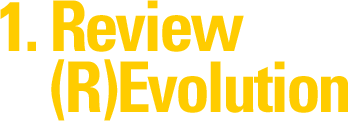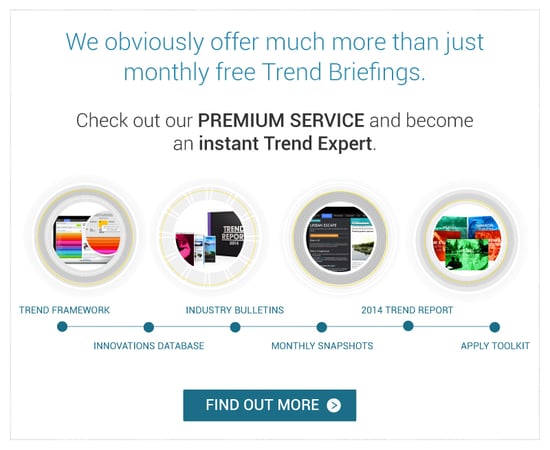
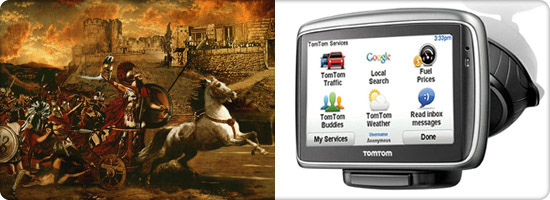
First published in September 2009 | Think 'transparency' is an established, maturing theme? You ain’t seen nothing yet. Sure, we’ve been harping on forever about the many ways consumers can research, compare and review their way to a more powerful position, but every month brings us smart new examples of consumers and brands intent on making opinions, quality standards and prices even more transparent.
So, it's time for a fresh look at the latest and greatest in the transparency arena*, where savvy consumers (as well as on-trend brands) can score triumph after triumph. We’ll look at how reviews are set for even more spectacular growth, how price comparison is getting much more sophisticated, and how the inner-workings of companies will be exposed in pragmatic new ways. We then end this briefing with a countertrend, OPENLY OPAQUE, that raises the bar even higher.
*Please note that this Trend Briefing limits itself to consumers’ desire for finding the best, the cheapest and/or the most ethical, as opposed to enjoying transparency of all information and knowledge, from government (in)action to the boom in personal profiles. Somehow, we think you will find the below lengthy enough as it is ;-)

The fortress of one-way communications from a non-trusted source (aka advertising) is crumbling!
Some telling findings from the latest twice-yearly Nielsen Global Online Consumer Survey of over 25,000 online consumers from 50 countries:
"Recommendations by personal acquaintances and opinions posted by consumers online are the most trusted forms of advertising globally. The Nielsen survey shows that 90% of online consumers worldwide trust recommendations from people they know, while 70% trust consumer opinions posted online."
There are many more research studies, findings, dissertations, and so on that confirm the same fact: reviewing is the new advertising. This shouldn’t come as a surprise: just as with other trends, what’s unfolding now is a ‘forever need’ among consumers, one that's now being satisfied in a superior and previously unattainable fashion. In this case, the need is for trusted advice and recommendations—for feeling in control, for knowing the facts, for avoiding mistakes and disappointments—in order to make that perfect purchase. Which has become even more pressing as choice-overload continues: never before was there so much to choose from, in mature consumer societies, and thus such a need for reviews.
It's a need that is met online by having access to millions of other consumers and their experiences and opinions, from giant review portals to real-time channels such as Twitter.
In short, businesses have to understand and accept that consumers’ decision making processes, which ultimately come down to whether they will buy from you or from someone else, have truly shifted to a new, powerful peer-to-peer arena.
So if that’s the current playing field, let’s look at the latest developments in the booming world of reviews:

1.6 billion online… and now get ready for the next billion, courtesy of the mobile web
While hundreds of millions of consumer reviews are already zipping around cyberspace, prepare for a deluge of truly biblical proportions. And a deluge of review innovations, too. Some numbers:
- 1.6 billion consumers are now online, and the majority of them have been online for years. They're skilled bargain seekers and ‘best of the best’ hunters, they're avid online networkers, and they're opinionated reviewers and advisors.
- On top of that, many more consumers in emerging markets are eager to jump into cyberspace with two thumbs: according to a UN report, there are now more than four billion mobile phone subscriptions worldwide, two-thirds of which are in developing countries. Even if only a third of those phones get online access in the future, the next billion online users are on the horizon.
- And for future contributors and viewers, especially those that are born to the web, for whom contributing and sharing is a given, reviewing will be a way of life forever.
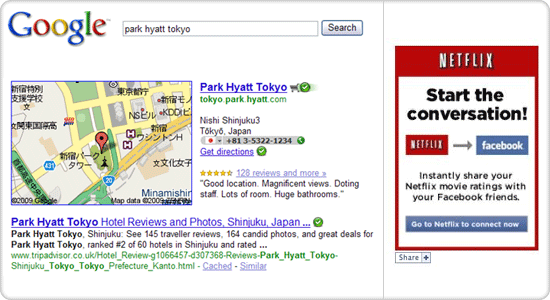
Google Rich Snippets and Netflix: aggregation and syndication galore.
The reviewing masses will increasingly be enticed to review (and share):
- Product ratings and reviews provider Bazaarvoice’s ShoutIT app enables reviewers to have their reviews effortlessly appear on their Facebook, Digg or Delicious pages as well, while Netflix has hooked up with Facebook to allow users' reviews to be shared on their profile pages.
- Members that post a review on Epinions are rewarded with so called Eroyalties credits, which are in turn are based on an ‘Income Share’ program. The Income Share pool is a portion of Epinions' income, and is split among all authors based on how often their reviews were used in making a decision (whether or not the reader actually made a purchase). Reviewers then can redeem their Eroyalties credits in US dollars.
Meanwhile, big players in the review arena are aggregating, white labeling and syndicating like crazy, causing existing reviews to pop-up in multiple places. A snapshot:
- TripAdvisor, which boasts close to 25 million reviews and opinions on more than 490,000 hotels and attractions, while attracting 25 million+ monthly visitors, earlier this year signed syndication deals with VisitBritain.com, easyJet Holidays and its sister site Hotels.com.
Meanwhile, travel site Raveable now provides a comprehensive view of hotels across the United States by aggregating and summarizing more than 35 million reviews of some 55,000 US hotels. - UK based comparison shopping service Shopzilla just teamed up with PowerReviews.com, a provider of customer reviews, to add product reviews to its product and price comparison service.
- Bazaarvoice recently signed a deal with UK retailers Debenhams and Asda to include customer reviews on their sites.
- Meanwhile, Sears Holdings, the retailer, launched its own review sites: MySears.com and MyKmart.com.
- Google’s new Rich Snippets program allows the search engine to now display product rating, review count, and actual review text direct in Google search results.
In fact, expect this to be the biggest ‘(R)Evolution’: universal search for products, brands, services and anything else consumers are interested in will turn up aggregated, relevant reviews almost by default, tagged and non-tagged, pulled from review sites (niche and massive), from blogs, from Twitter, from Facebook, from YouTube, and so on. - Let’s not forget about more compelling formats for reviews: a revealing video says more than a 1,000 photos, and thus the proliferation of videocam phones, including Apple's new iPhone 3G S which includes video functionality, geo tagging, and direct upload facilities for YouTube and Mobile, will be yet another push for video-reviews to take off.

- Reviews are also making their way to the 'real world': aforementioned Bazaarvoice now works with UK retailers Argos and Halfords to feature customer reviews in paper catalogs (Argos alone reaches 17 million UK households with its catalogs).
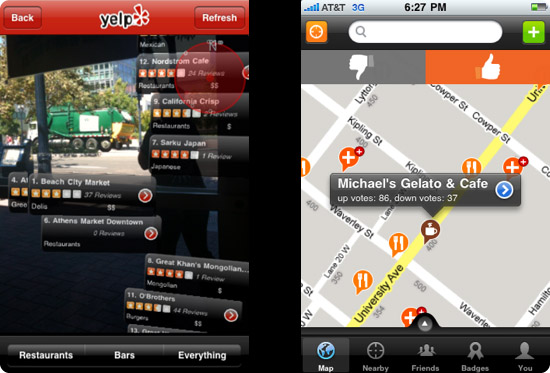
Images courtesy of TechCrunch and Mashable.
More ‘real world’ developments (with a virtual twist): expect plenty of augmented reality-meets-reviews examples to pop-up soon. Here are two to get you started:
- Local review site Yelp boasts the first iPhone app with augmented reality. Users can put their iPhone camera in front of a restaurant, with Yelp’s reviews then overlaying their real-world views. (Source: Mashable).
Meanwhile, GraffitiGeo, a mobile service that allows users to share brief reviews of restaurants, is working on a similar iPhone app. More info at TechCrunch.

Yes, that’s one gross pic, but hey, anything to get your attention!
Important side-effect of the above is that the deluge in postings will also unmask, outnumber and thus neutralize fake reviews posted by malicious consumers or desperate brands. Which will lead to an even greater trust of recommendations and reviews. In the near future, consider the discussion on whether to trust reviews to be over.

Scale is one thing. Scope is another. No B2C sector is immune to the review virus. Expect every industry, every sector, every product to eventually succumb to reviews, Tripadvisor style. Examples:
- Health | Vimo, a comparison-shopping site for health care, offers rate-my-doctor and rate-my-dentist functionalities. A similar review service is offered by ZocDoc.
- Beauty | On Makeupalley.com members give reviews on everything beauty-related, from makeup and skincare to hair dryers and perfume. The site includes detailed information about each user’s skin tone, hair color, skin type and eye color at the top of the review so that readers can gauge how well the advice will fit their own needs.
- Law & education | Avvo profiles legal professionals, including their experience, areas of practice, and ratings from clients. Ratemyteachers does the same for teachers. Also check out Yollege.
- Airports | Sleeping In Airports has over 6,300 reviews of how airports around the world rate for sleeping in public areas.
- Tech | Fixya is a popular post-sale tech support site, where 15 million members help each other with product support questions on 1 million products. It has now added product recommendations to its website.
- Recruitment | Glassdoor aims to provide an insider's look at what it's really like to work at a company, both financially and otherwise. The site gathers real-time reviews, ratings and salary details about specific jobs in 28,000+ companies. Also check out Australian LiveSalary.
- Restaurants | Dishola eschews general restaurant reviews in favor of dish-specific (!) advice and information. Members can read smart reviews by Dishola editors, industry professionals and other members, as well as post reviews and photos of their own favorite dishes.
- Automotive | JeepReview offers reviews of Jeep parts, accessories, retailers, and trips.
- Printing | Printer.com provides information on a wide range of printers and cartridges; the site currently features more than 4,500 printers and over 1,950 cartridges.
Note: a fun entrepreneurial opportunity is to start a review portal (reviewcircus.com?) that lets consumers quickly find the right niche review site for their query. Just a page listing the various B2C categories, and links to related niche review sites. Should take you less than a week to get live, and could be a great advertising cash cow ;-)
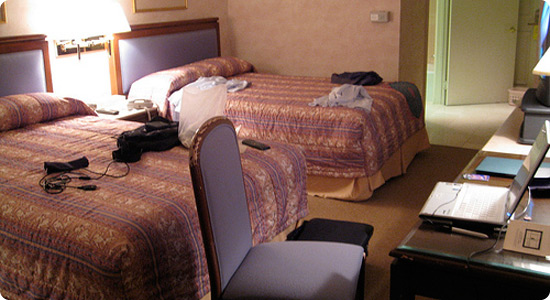
These days, hotel room reviews are posted from the room, not upon return home.
Deluge and connectivity will lead to real-time reviewing of products and services:
- First of all, as more people are contributing, the sheer mass of reviews will in effect lead to daily if not hourly reviews on any topic imaginable. Which means more timely and accurate information.
- Secondly, as universal online access meets netbooks, laptops, and phones, virtually all equipped with (video) cameras and audio capture, we're already seeing an increase in on-the-spot reviews, from text to full-blown videos. Remember, someone going through an annoying or pleasant experience, but lacking online access, has to postpone his or her review, which often results to not posting at all.
In fact, Twitter has established itself as the real-time* snapshot of what people are thinking/feeling/experiencing and yes, reviewing, around the world. Expect numerous services to capitalize on this burgeoning ‘global brain'. One example: SkinniPopcorn provides Twitter feeds of users' real time comments about newly released films and the current US box office top ten, as well as the ten movies that are currently mentioned most often.
* As promised last June, when we highlighted FOREVERISM, we will dedicate next month's Trend Briefing to NOWISM, covering all the business opportunities related to the emerging real-time economy. Will land in your inbox or feed early October.

- And yes, reading reviews on the spot will become uber-popular too, of course! More on this in 'Price Pandemonium', below.
Yet another way reviews can be made more attractive and useful, and thus more powerful: combine them with MAPMANIA. Check out the following location-based review sites that let you find the best hotel room, restaurant table, playground or, yes, airline seat.
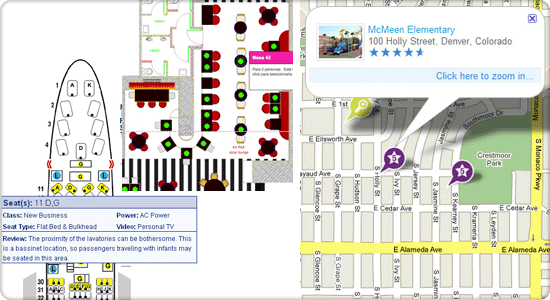
- The KaBOOM! Playspace Finder is a user-generated online directory that lets anyone enter, search for and rate play spaces. Users can add photos and comments for each play space, as well as detailed descriptions including available playground equipment or amenities. Some 16,000 play areas across the USA and Canada are now listed on the Google Maps-based site.
- Homewoodsuites by Hilton Hotels offers guests the option of picking their hotel room. Guests can view hotel floor plans and book specific suite types based on their location, photographs and descriptions. Adding a touch of PERKONOMICS, the Suite Selection tool has (for now) been reserved for premium Hilton club members who use Hilton's eCheck-in.
- Wagaboo's restaurants in Madrid and Barcelona let prospective visitors select the restaurant, date and time they're interested in online, then presenting them with a seating map with available (and suggested) tables.
- Still going strong, SeatGuru helps passengers select airplane seating, in-flight amenities and airline information based upon the airline and type of aircraft they’re flying. The site now features 25,000+ user comments, and offers more than 650 airline seat maps covering 90+ airlines. The service has now also been incorporated into its parent site, Expedia.
- TripKick tackles an equally important aspect of travel: hotel rooms. Coverage of each hotel includes detailed information on which rooms to request—which rooms are oversized (rooms ending in 03 and 04, for example), which have great bathrooms or are quieter than others. TripKick also points out which floors are better, and which to avoid. Guests are encouraged to add their own reviews and upload photos of rooms they've stayed in.
BTW, we're planning to do a Trend Briefing on MAPMANIA in the near future, incorporating the latest in augmented reality, so please do stay tuned.

Do you know just whose recommendations and ratings you’re blindly lapping up?
Here’s what is probably one of the current reviewosphere’s biggest hurdles (and thus one of it's biggest opportunities), and no, it's not trust, it's relevance. Who are these people whose reviews determine what you read, where you stay, what you drive, where you eat, what you watch, where you get operated on…? Which is why, for years, we’ve brought up TWINSUMERS: consumers whose lifestyles mirror yours, who think, live, act, consume alike, and whose reviews therefore have real relevance. Basically, the onslaught of recommendations needs some transparency of its own.
For those of you who have already worked out and executed a review strategy: please focus on making reviews relevant for your visitors and customers by providing profiles, backgrounds, context. A nice win for 2010? Some examples of what’s (slowly) building in this field:

- Profiles | booking.com and TripAdvisor do offer traveler profiles, and they will at least give you information about the reviewer’s age, gender, travel styles, location, travel experience, personal circumstances and so on, but there’s obviously plenty of room for more extensive profiles, if not collaborative filtering. Parallel to this, expect more people to first ‘collect’ the people they trust and/or admire (Twitter followers/following, or Facebook friends) and then turn to their ‘audience’ for advice/recommendations.
- Professionals | Oyster Hotel Reviews employs 13 professional reporters who independently review hotels, paying for their own stays. Once a review of a particular hotel has been posted online, Oyster invites other travelers who've visited the same hotel to add their comments and reviews. The site also recently began requiring consumers to use Facebook Connect if they want to rant or rave about a hotel. Says Oyster: "The way we see it, if you’re willing to attach your identity to your commentary, you’re willing to stand behind what you say. No anonymous mudslinging; no PR propaganda."
Expect a host of new ventures to spring up and monetize collaborative filtering and profile matching in the next 12 months, most likely by partnering with the Twitters, Facebooks and LinkedIns of this world, who are already profile-driven. One for you?
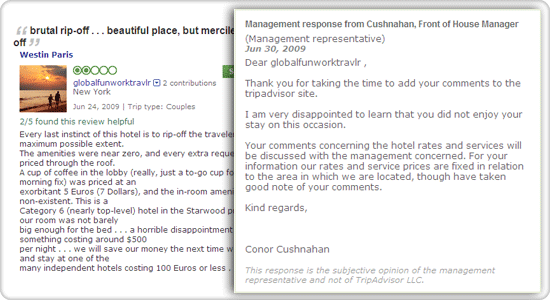
Do not let bad reviews go unanswered!
Surprisingly, so far the Review (R)Evolution has been pretty much one-way. Quite a few brands still seem to believe that they’ve been granted an eternal ‘grace period’ when it comes to dealing with all of the above. While brands are no longer unaware of reviews, they (to a large degree) still choose to listen, not talk back, trying to ‘learn’ from the for-all-to-see Review (R)Evolution. Which is surprising, to say the least, since a quick and honest reply or solution can defuse even the most damaging complaint.
In fact, there’s no standing on the sideline when it comes to TRANSPARENCY TRIUMPH, and the least any brand should want or demand is the right of reply: to get their side of the story in front of the mass audiences that now scan reviews. Expect smart companies to increasingly post their apologies and solutions, preferably directly alongside reviews from unhappy customers. And yes, that should include the occasional candid rebuttal by a company that feels (and can prove) that a particular review is unfair or inaccurate.
To see the future for Right of Reply, check out:
- Tripadvisor’s Management Response feature allows representatives of hotels, restaurants and attractions to respond to reviews written about their properties.
- Local business review site Yelp allows business owners to manage their own page with detailed information, and lets them respond privately to reviewers. The latter is also offered by Bazaarvoice, which allows owners direct contact with posters of negative reviews. HomeAway, the vacation rentals marketplace, has an owner-response feature, too.
- Swedish Fairshopping allows consumers to post public complaints about companies they have done business with. The companies mentioned are then given the chance to reply on the site. Other users can chime in on the conversation, agreeing or disagreeing with the initial complaint.
There’s also a self-organized ‘right of reply’ for B2C brands: allowing for reviews on their own site. All they have to do is to ask their customers and they're in business. Biggest advantage: a guaranteed opportunity to publicly react to bad reviews that would otherwise pop up in less accessible spots. And favorable reviews will of course bring the benefit of instant endorsements of whatever it is you're hawking. Just one example: American Apparel’s on-site reviews.
Who knows, one day, well-performing ‘direct brands’ may actually desire and encourage this kind of feedback, which in turn will further add to the deluge.
Last but not least, check out services that monitor the mood out there, aggregating online comments, reviews and bits of feedback from consumers about your products or brands.
And yes, here too, Twitter is an amazing example of how easy it has become to do some quick checks on what the verdict is on any kind of new product, service and everything else worth reviewing by millions of twitterers. Two examples: ScoutsLabs and Twitrratr.
You have no excuse for not knowing, and you have no excuse for not replying, either ;-)
![]()

Replying to angry mobs is the second best solution.
May we humbly remind you that bad reviews are not the problem, but a symptom? Not listening to (dissatisfied) customers is often at the root of the problem. Consumers don’t post their bad experiences straightaway. Most will notify you or one of your colleagues first. It’s mismanagement of complaints and conflicts that invokes postings. Whether it’s someone at your helpdesk, someone in your stores, or an account manager; there’s virtually always an opportunity to settle an issue before it goes public. And if you really screw up, beat customers to the punch by being the first to report failures. Let customers know how you fix problems. Eventually, this will free up resources and energy to actively focus on enabling happy customers to post positive reviews. Now that's TRANSPARENCY TRIUMPH ;-)
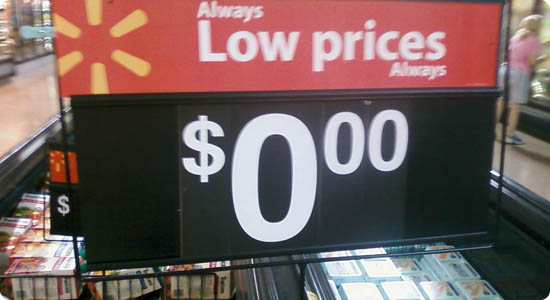
How low can / should you go?
What else can we say about online price comparison than that full price transparency seems near? Show us one consumer who does not spend hours hunting down the lowest fare for her Sydney-Perth trip, the best price for that Philips television, the cheapest copy of Murakami’s latest novel? Needless to say that the dire state of the economy is making consumers flock to price comparison sites in greater numbers than ever before.
So yes, the Shopzillas, Pricegrabbers, Shopping.coms, Kelkoos, Google Product Searches, Bechnas and Roboshoppers of this world will instantly find consumers what has become known as the ‘Internet Price’. Next? More niche and more sophistication:

First, like with reviews, when there’s mass, there’s going to be niche. Expect plenty of dedicated, one-category only price comparison sites to up the ante. Fun examples:

- Liftopia lets ski resorts sell discounted lift tickets online. Visitors simply choose dates and regions where they want to ski, and then scroll through a list of budget-priced lift tickets.
- Medication comparison engine Medtipster finds its users the best prices on prescriptions, with the pricing given for specific pharmacies in one’s neighborhood.
- mySupermarket is a free shopping and comparison website for supermarket shoppers that links the online portals of the UK's four main supermarket chains (Tesco, ASDA, Sainsbury's and Ocado) and compares prices on the fly. Also check out Grocio, which claims 18,000+ registered shoppers (as of August, 2009).
- OpenCarPrice.com, TrueCar, RealCarTips.com and PriceHub offer reader-submitted information about what previous buyers paid and tips on how future shoppers can get the best deals by negotiating.
- BusJunction combs through discount fares on a dozen of the big bus lines that ply the major routes between Washington, D.C., Philadelphia, New York City and Boston (as well as further west in hubs like Cleveland, Buffalo, Chicago).
- OurParents is a free eldercare matching service, focused on assisting children with aging parents. The service offers descriptions, services, photos, quality ratings, price info, etc for over 65,000 care providers and allows consumers to filter search results by location, cost, quality, distance and special requirements.
- Treatment Abroad, the leading online medical tourism portal, has launched a ratings and reviews system for medical tourists to share and rate their experiences of travelling overseas for medical treatment.
- lensprice.com compares eight large online contact lens retailers for the best prices for over 15 of the contact lens brands. Findcontactlenses.com does the same, comparing the prices for 26 brands among 10 online retailers.
Next? Niche price comparison meets analysis. While extensive price advice based on personal profiles, assets, preferences etc. is already widespread (just think insurance and mortgages), expect to see more services really digging into consumers' usage patterns, then finding the best price.
Just one example: Validas' mybillaudit.com, which lets consumers upload their actual cell phone bills, generating a detailed report (based on usage patterns) on what plan (and which carrier) would save them the most money.
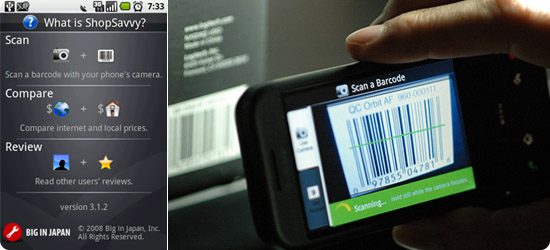
Point & know
Could the iPhone (and Android, and others) mean the final breakthrough for on-the-spot price comparison in the ‘real’ world? While mobile price comparison has forever been the promised killer app in a retail world that is still dominated by physical stores, it took an iPhone (read: a mobile device that finally makes it possible to surf the web on the go, without a clunky interface or dial-up speeds that bring back memories of 1995) to unleash this promise.
In short, expect consumers to start treating real-world stores as showrooms and try-out centers, while finding the lowest online price via their web-enabled cell phones. Only hard-to-find and unique objects of desire and impulse buys may escape the "feel it - see it - try it offline - then buy it cheaper online" routine. Which in return means more direct sellers feeling compelled to match the lowest prices found on price comparison sites. For your own brand, you'll have to figure out if that’s going to be a race to the bottom, or a clear signal you need to start delivering products and experiences that are hard to price, if not priceless… In the meantime, keep an eye on:
- Shopsavvy, an Android app, allows the user to scan almost any barcode using the phone’s camera, and it will then search over 20,000 online and local retailers to find the best price. Once the best deal has been found, users can either purchase online, or use the phone’s built-in Google Maps feature to find their way to the store. Which means that even impulse buys aren’t ‘safe’ anymore: this may entice even the most buy-ready, real-world shoppers to postpone their purchase for a few minutes ;-) Shopshavvy won the 2008 Google Android Developers contest and has been launched in the US, UK, The Netherlands, Germany, Austria, Poland and the Czech Republic. A version for the iPhone is in the works.
- Californian SnapTell says half a million iPhone and Android users have downloaded its application (which, unlike Shopsavvy, allows users to photograph a product using cameras in their handsets, and then upload it to the website for reviews, recommendations and best prices), resulting in more than 1.5 million image queries so far. More than one in three buyers click through to an online retailer, earning SnapTell commissions.
- SnapTell is owned by Amazon.com, who last month also released its own, free, Android mobile application, which allows users to take photos of an item on their phone, or scan a barcode, and then have Amazon search for the same product online, enabling immediate comparison with the physical-retail price. If the price is right, users can purchase the item securely from their mobile device.
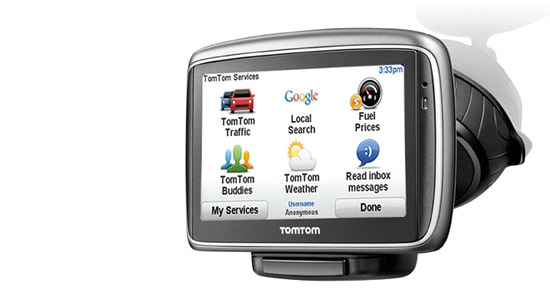
The lowest (fuel) price finding you
Combine devices that know where you are and what you might be looking for with an alert functionality, and you will end up with the best price finding you.
Examples:
- The TomTom Fuel Price Service: for a yearly subscription fee of EUR 14.95, users select whether to list gas stations by location or price on their device, and can request the lowest gas prices on their route within a user-selected radius. Travelers can also choose which type of gas they would like tracked: regular, mid-grade, premium or diesel. The service is available in the United Kingdom, The Netherlands and France.
- Apnoti watches Amazon for price drops. You can use it either by dropping in the Amazon product link and your e-mail address, or by installing a tool bar that adds the option to watch a price to Amazon.com. Similar services are offered by ZingSale, Ookong, WishRadar, PriceDrop.
- While sites like Liligo, Expedia and Ctrip all provide fare alerts to help travelers track tickets and hotels that match their preferences and alerts them by email when prices drop, Yapta goes the extra mile: if the price of an airline ticket drops below what someone has paid, Yapta will alert them when they are eligible for a refund from the airline. Since launching its initial airfare tracking service in May 2007, Yapta claims it has alerted over 600,000 travelers to more than USD 170 million in potential savings (an average of USD 306 per Yapta user).
